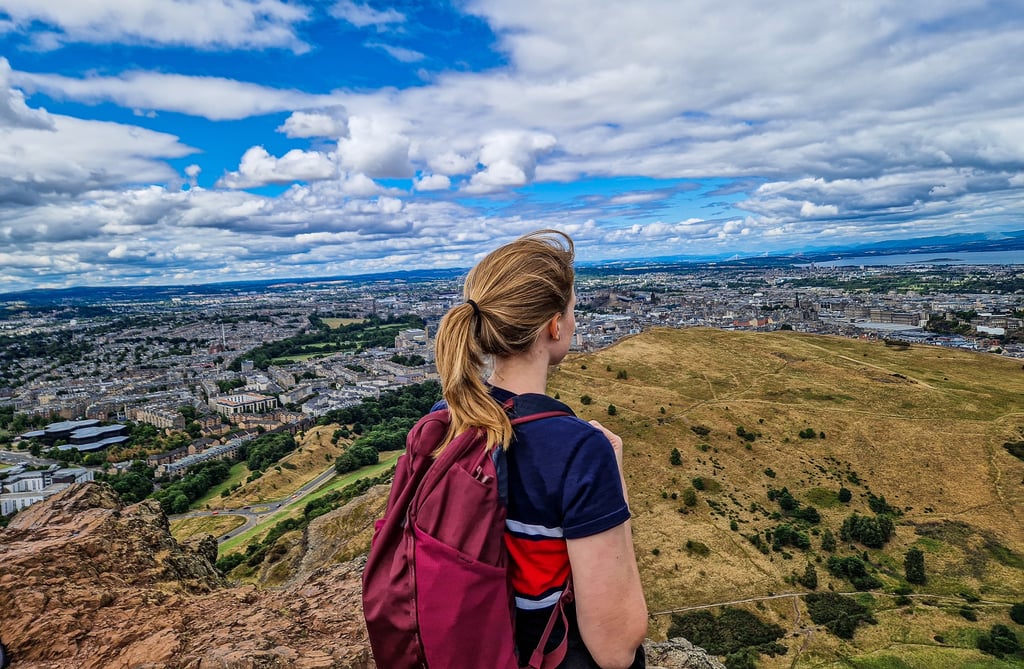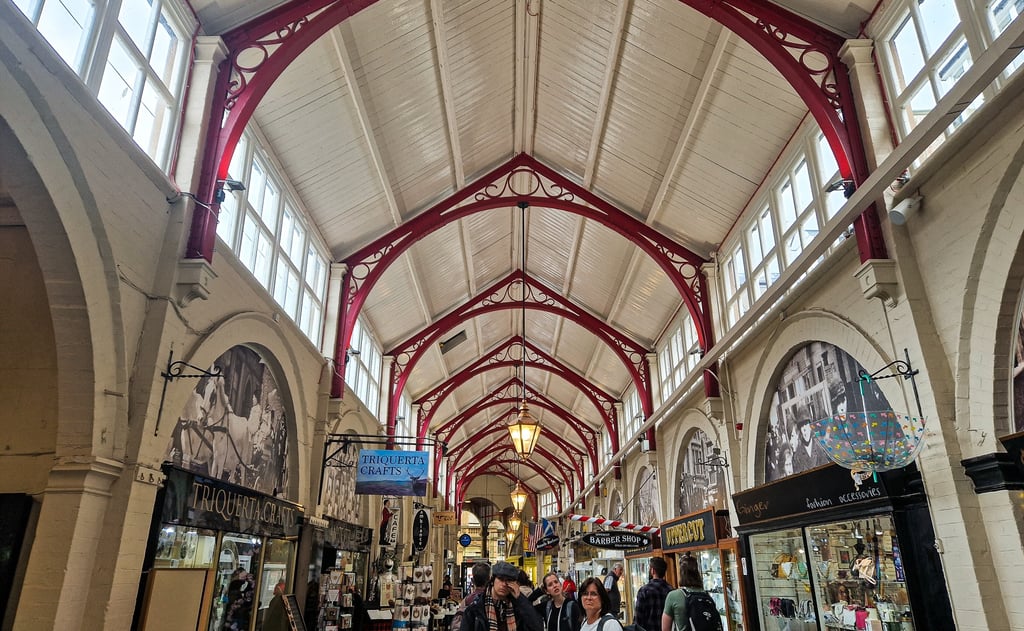
SCOTLAND

SCOTLAND
Scotland itinerary & things to do
Scotland is an amazing destination for nature lovers. The dramatic landscapes will blow you away more than once. Even during peak season, you can have a stunning place all to yourself. In this Scotland itinerary, we take you to the cities of Edinburgh and Glasgow, the islands of Orkney and Shetland, and the natural scenery of the Cairngorms and the North Coast 500 route.
Scotland: the ultimate road trip destination
People like to joke about the supposed bad weather and boredom of Scotland. For many, holidays should equal infinite rays of sunshine. We, however, had the most amazing time travelling through Scotland. Maybe it's because we were blessed by, for the majority, wonderful weather or it's simply because the landscapes were just too beautiful for the rain to spoil the fun. We even dare to say that this has been one of our best travels so far.
The hospitality, the nature, the calmness, the easiness of travelling around... there is just so much that makes Scotland an amazing travel destination, especially for a road trip.
In this itinerary, we take you along some of the best places to visit in Scotland, including a visit to the Orkney and Shetland islands!
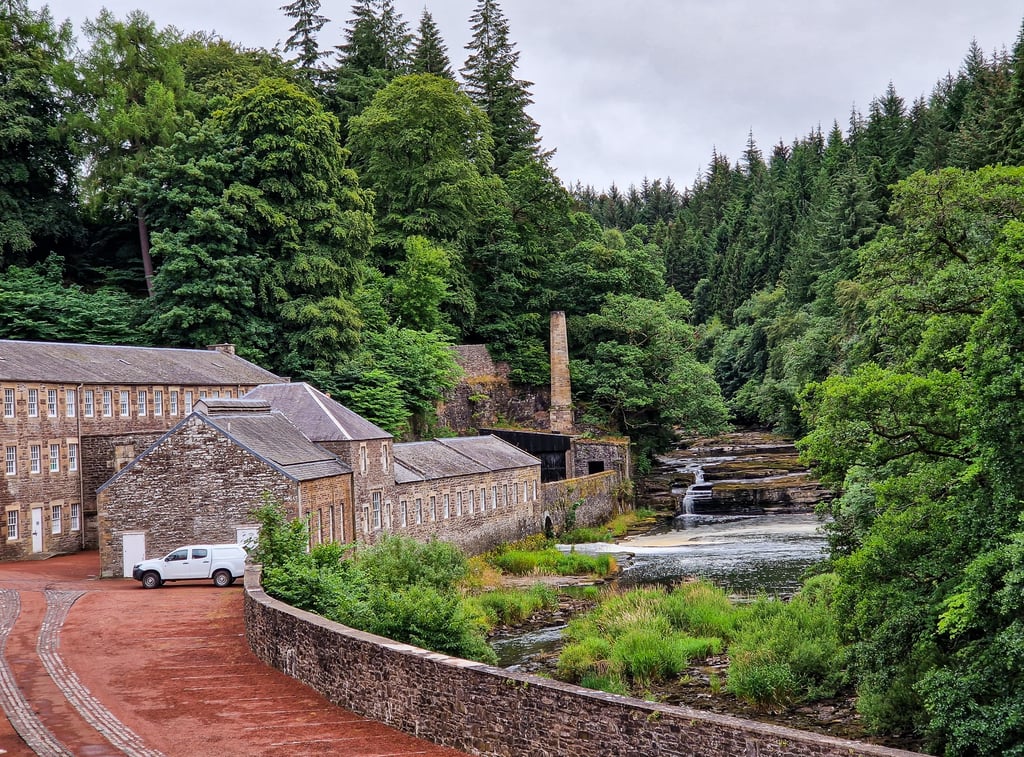

Recommended itinerary
This itinerary will take about 3 weeks, depending on your travel pace. If you have more time, you can explore Scotland much further or add (parts of) our England itinerary to this route.

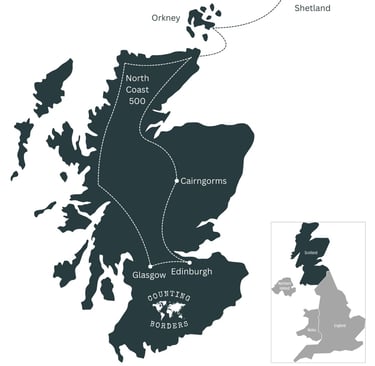
Edinburgh
Edinburgh is a popular city trip for many Europeans. It's the capital of Scotland and rich in history and great city life. We especially loved adding it to our long diverse itinerary, as we are not that much into short city trips. We just feel like you appreciate a city better if you see more of the country it's in. Anyways, no matter how you visit Edinburgh, it is a lot of fun!

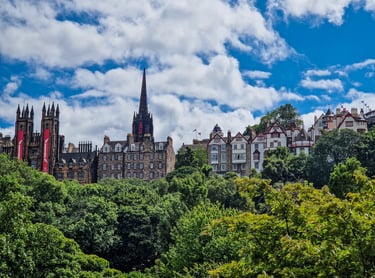

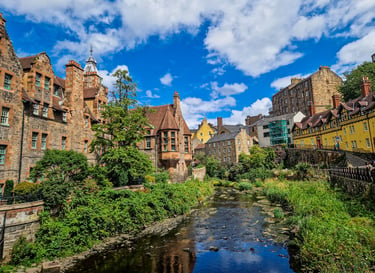


We loved just strolling through town, such as through the Princes Street Gardens, where you have the best views of the Edinburgh Castle, and the old Dean Village, which could have been a site in Harry Potter. We also really enjoyed visiting the Museum of Scotland, which you can visit for free (just like most museums in the UK) and has a big Scottish history and natural history collection.
Other famous attractions are Gladstone's Land and Georgian House, which are replicas of a 17th-century merchants' home and a rich family's 18th-century home. At Mary King's Close you can learn about the dark side of Edinburgh and its hidden streets. There are many more sites, buildings and museums to discover, depending on how long you're here and what you prefer.
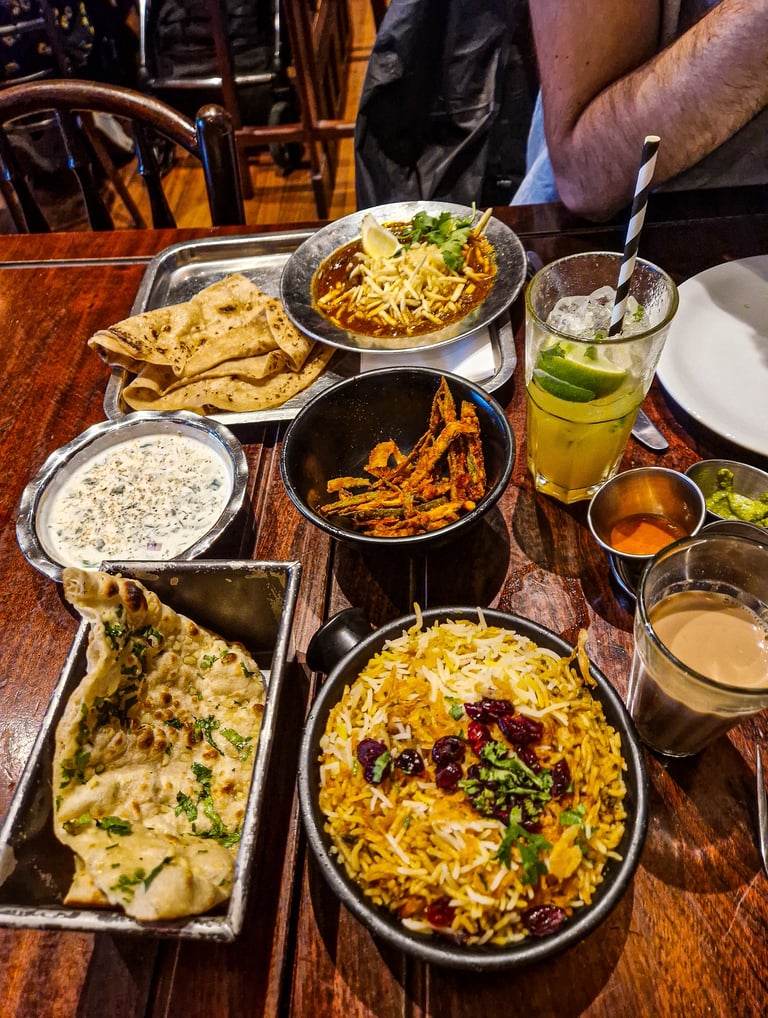

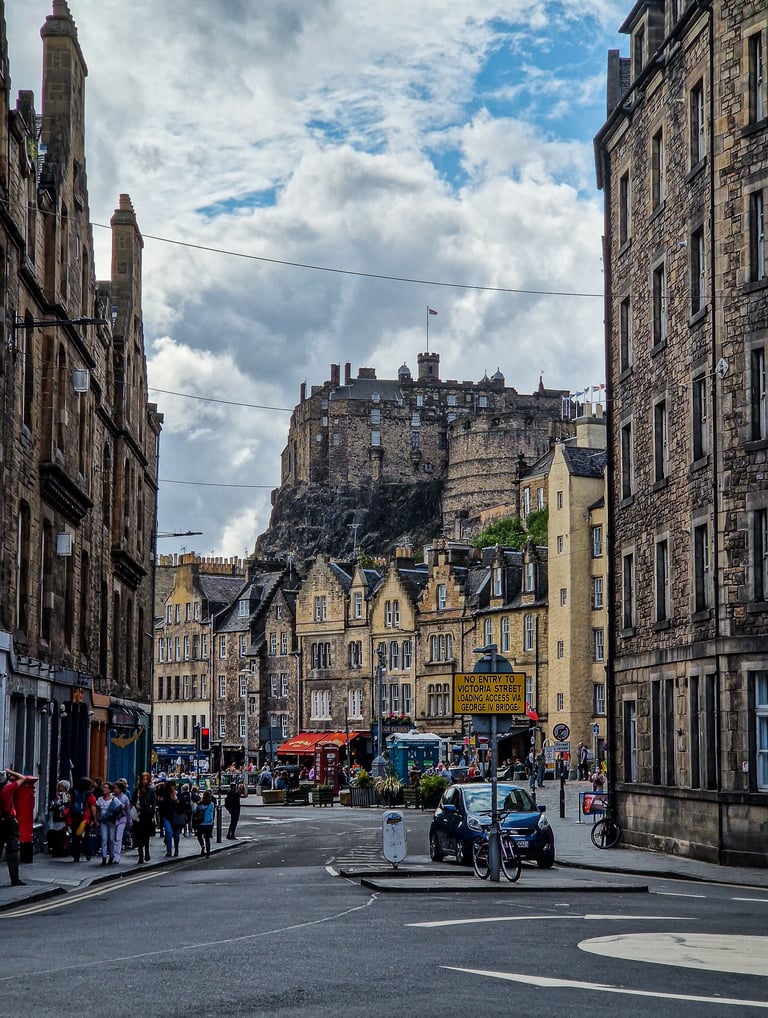

There are more than enough great restaurants and cafés in Edinburgh. We had a great brunch at the historic Deacon's House Cafe. In terms of cafés, we can recommend a drink at Kick Ass Bar when it's sunny, as you have an awesome view of the castle from the terrace here. For dinner, we can assure you that you will have the best dining experience at Dishoom, which is a Bombay-inspired restaurant with just the best menu and atmosphere. Another nice place to eat is Ting Thai, a fun hip restaurant where they serve some great Thai food.
Outside of the city centre are also some fun sites. The most famous one is Arthur's Seat, which is the highest point of a beautiful ancient volcano, from which you have an awesome view of the city and its surroundings. You can make the visit easier by parking halfway up the mountain.
In case you drive here from the south, we can highly recommend visiting Hadrian's Wall on the way. This stone wall used to be the border in Roman times. We especially loved the part of the wall at Cawfield Quarry, where the wall is located on a beautiful ridge. Another cool site on the way is New Lanark, a unique 18th-century industrial community town, which is a Unesco World Heritage Site because of its historic and architectural significance.
If you're travelling by campervan or tent, we can recommend staying at Mortonhall Caravan & Camping Park instead of staying in a hotel in the city centre to save some money. From here you can easily reach the centre by bus.
The harbour neighbourhood of Leith is not touristy yet but is upcoming. On Saturday, there's a great food market. We enjoyed lunch and cake at Printworks Coffee. The only tourist sight here is The Royal Yacht Britannia, which used to be the 'home at sea' for Queen Elizabeth.
On the northwest side of Edinburgh, you'll find the impressive Forth Bridge, which resembles the Eiffel Tower in style. It's a Unesco World Heritage Site because of its architectural significance. All in all, we can definitely recommend adding the outskirts of Edinburgh to your travel plans, as it makes for a nice diverse city experience!
Cairngorms National Park
Cairngorms National Park was one of the highlights of our trip. This region offers the true highland experience. We started with a stay at the beautiful Ardgualich Farm campsite on the edge of the park. Waking up with the dew rolling over the mountains is a great preview of what is yet to come. Nearby Pitlochry is one of the gateway towns to the Cairngorms.
The true start of a Cairngorms road trip is Glenshee, where you'll be blown away by the magnificent landscape immediately. Just keep on following the Old Military Road (A93) that takes you straight through the park. We would suggest doing this road trip on the first one or two days and then continue doing activities around Aviemore. We'll cover both of these in-depth hereafter.
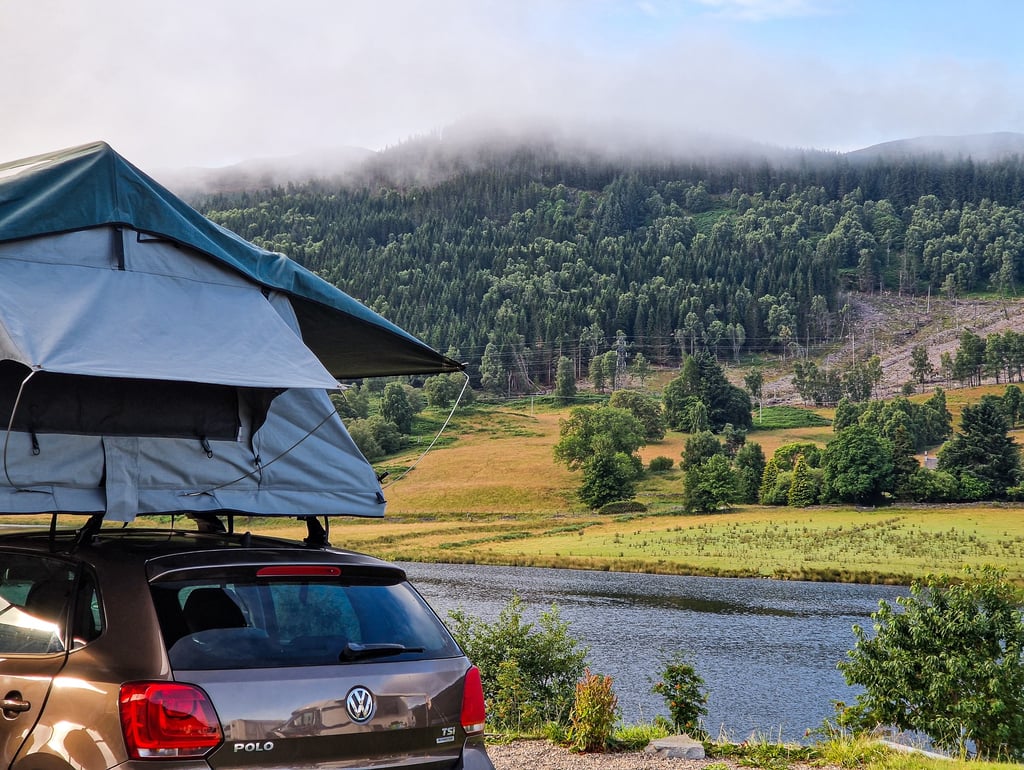


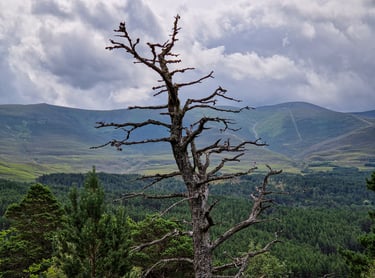


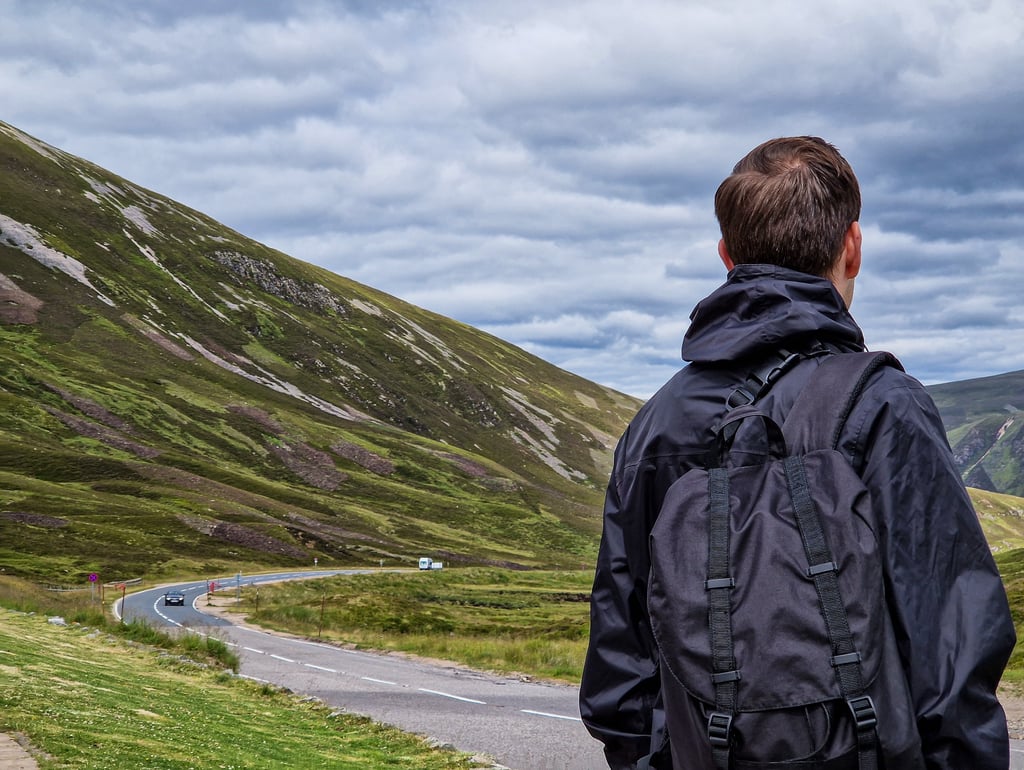


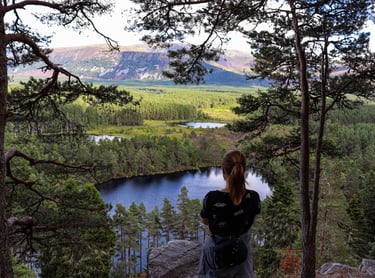

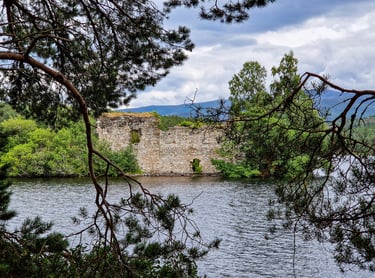
Explore the Aviemore area
Next up, we would suggest exploring the west side of the Cairngorms around Aviemore. It can be quite busy here, as there is so much to do. There are plenty of lakes where you can do water sports or hike around. First up, you can drive up the beautiful Cairngorm Mountain and walk around.
Near Loch Morlich, you can enter Glenmore Forest at the visitor centre. When looking it up on Google Maps, you see three parallel roads, we took the uppermost one. This path provides you with the most stunning views of the valley and the mountain. It is not too challenging, yet very fun, especially the last part where you descend to the lake called An Lochan Uaine (loch is Scottish for lake, remember this if you don't want to upset a Scot when asking for the way...). The loch is really beautiful, because of its emerald colour. From here it's just a really easy walk back to the car park.
We would also suggest a visit to Loch an Eilein, which has a beautiful ruin in the middle of the lake. You can walk around the entire lake or save up your energy for an even more exciting walk nearby. First recharge at the lovely little Old Post Office Cafe Gallery, which serves awesome lunch, including some Italian delicacies. Then drive up to Uath Lochans and take the red trail, this will take you to a stunning viewpoint of the lochs and mountains. It's a quiet trail, great for spotting some deer.
The Cairngorms National Park is located between several Scottish cities, so you can go any direction you like from here. We continued to Inverness, which is the starting point of the North Coast 500 road trip.
Following the Old Militairy Road
Along this road trip, you can embark on several challenging hikes during which you can stay the night at one of the Bothies (wooden cabins) in the area. Just search for them on Google Maps and pick one out. If you're not into challenging hikes (like us) then you can enjoy the views from the car and hop out once in a while. On the first leg of the journey, viewpoints you'll come across are the Devil’s Elbow Viewpoint and Glenshee Ski Centre.
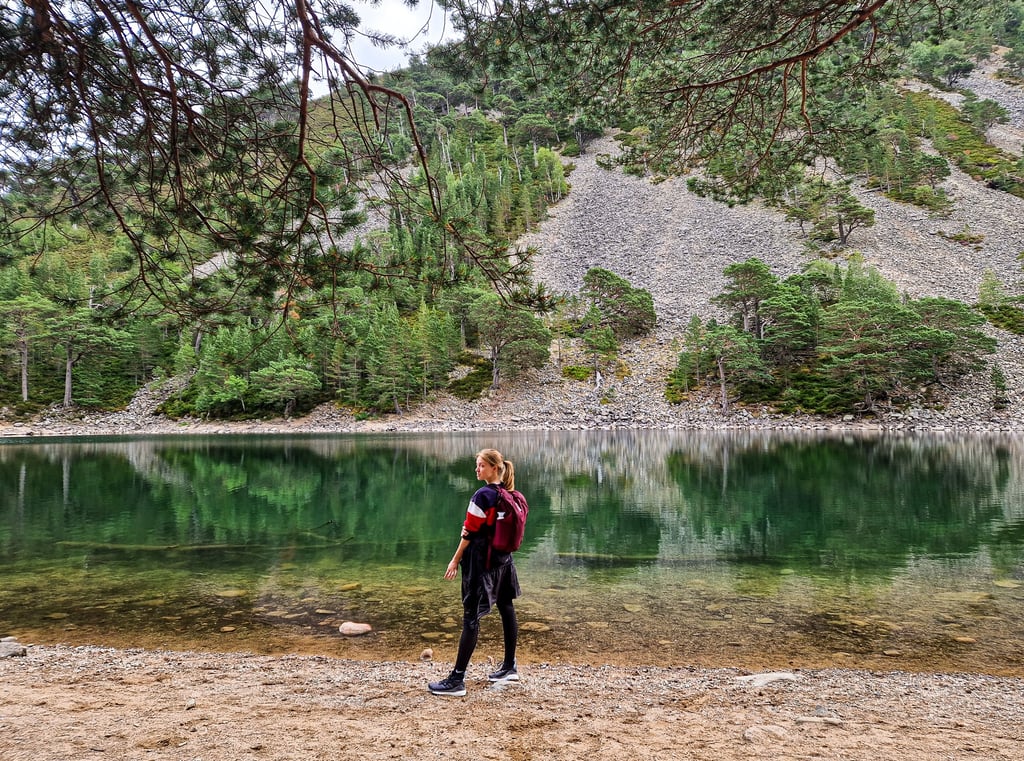

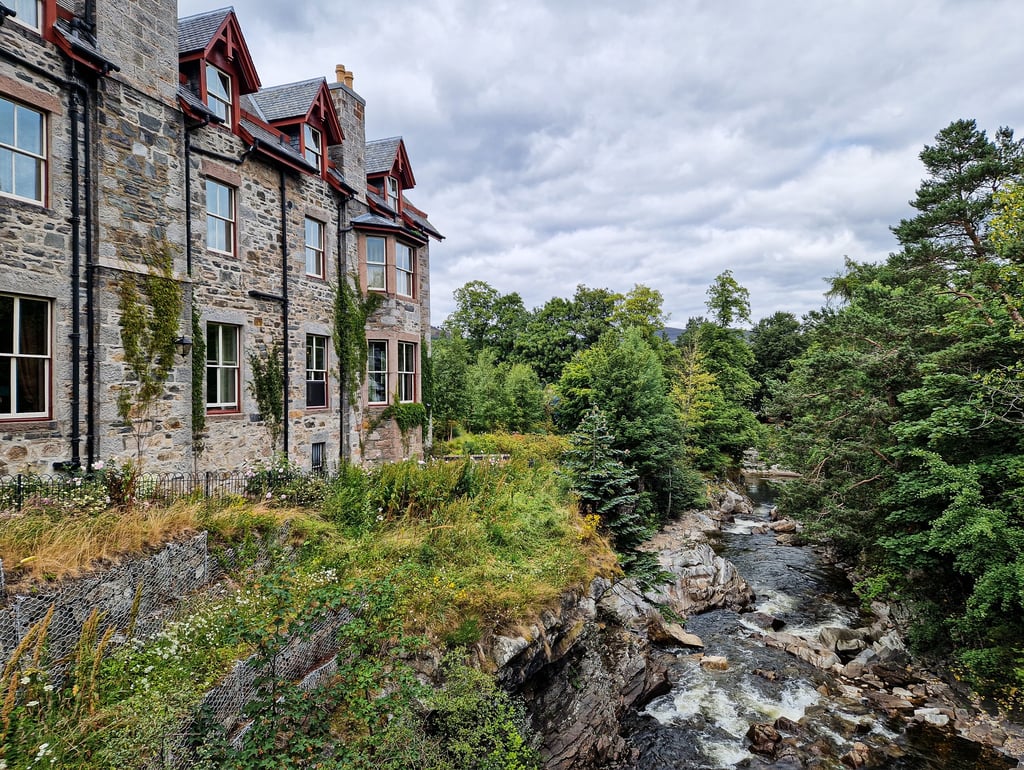

The next stop is Braemar, one of the few towns deep in the Cairngorms. The Bothy Braemar is a lovely riverside place for lunch and tea. It's a town that the royal family has loved to visit ever since Queen Victoria started coming here for vacations. Linn's Dee used to be her favourite picnic place.
A few miles further, you'll find the famous Balmoral Castle which used to be Queen Elizabeth's favourite place to be. It's definitely understandable why, as the Cairngorms is such a magnificent place to be.
The remaining part of the road trip is just lovely scenery. If you're lucky, you might come across some red deer! You can stay the night at The Lazy Duck or try to find a campsite somewhere off the road, as it's legal to camp 'in the wild' in Scotland.
North Coast 500
The North Coast 500 is probably the most famous road trip in Scotland. This route takes you along the beautiful tame coast of the northeast, to the rugged coastline of the northwest. According to many people, it's one of the prettiest road trips in the world. We've only covered the northeast part and although we had a great time, this is supposedly the most boring part. We did get a glance at the 'prettier part' at Bettyhill, and it looked VERY promising so we'll definitely be back and will update this guide accordingly.
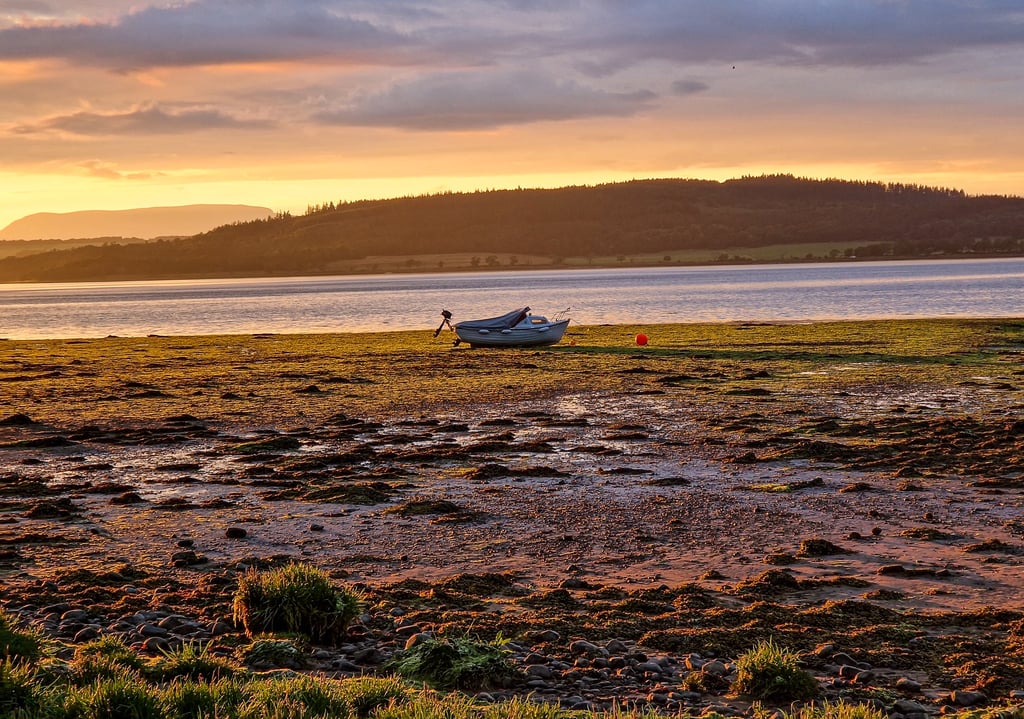


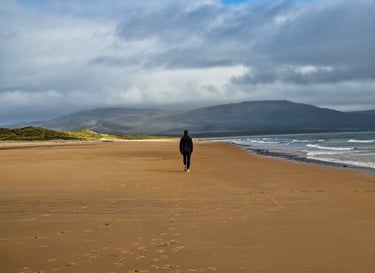
Inverness
The gateway to the North Coast 500 is the city of Inverness. To be honest, we weren't blown away by the city at all. It is however a great place to stock up on some warmer clothing and camping gear if you need to as it is the last city you will come across. We had a lovely stay at the Bunchrew Caravan Park because of the stunning views of the Beauly Firth (a coastal inlet).
In case you do end up going into town, we can suggest having a coffee at Café de Paulo at the cute Victorian Market. It's also fun to walk along the Ness River and Islands. As the name should already hint you, this river ends in the world-famous Loch Ness, which is a twenty-minute drive from Inverness.

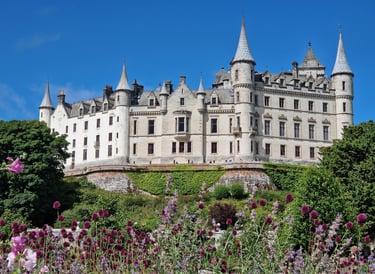

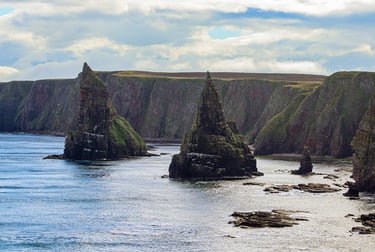
Sights along the east coast
Now, back to the main route. You don't even need to use Google Maps, as all the North Coast 500 towns and sights are marked along the way. However, we would argue that not all towns and sites are worth stopping by. Therefore, we will share our favourites so far.
First on the list is Dornoch Beach, an incredible stretch of coast. Many of the beaches here have been deemed the best beach in the UK at least once. Another award-winning beach is Embo Beach. We accidentally found this beach while desperately looking for a place to camp for the night. We weren't lucky in that regard, but it did make us find this incredible beach. We would even say this is one of the prettiest beaches we have ever seen and the best part is that you'll hardly find any other people as it's not an official NC500 site.
Whenever you drive by Golspie, we recommend a pit stop at the Coffee Bothy. A five-minute drive away, you'll find the beautiful Dunrobin Castle and Gardens. We normally enjoy visiting sights like castles, but the entrance fees in the UK go through the roof. However, this castle (or technically a manor) was reasonably priced and stood out to us because of its architecture and location next to the sea. We can definitely recommend it!
The wild northeast
Another place we really liked visiting was the cliff town of John o'Groats. This is the literal end of mainland Scotland and the gateway to the Orkney and Shetland Islands. In John o'Groats, we can recommend going to the Duncansby Stacks, two stunning rock formations in the sea. We also had an amazing stay at Windhaven, a campsite near a rather frightening, yet beautiful cliff.
The Black Isle
An add-on to the main route is the Black Isle. This peninsula has a few small towns you can visit such as Fortrose and Rosemarkie. We've only driven through them but did stop at nearby Chanonry Point, which you reach by driving through quite an extraordinary golf course (watch out for the balls!). Chanonry Point is well-known for the views of the bay and the dolphins that can be spotted here. We weren't so lucky, unfortunately. In case you really want to go off the beaten track, you can visit the tiny harbour town of Cromarty. It has a very cute little restaurant and shop called Sutor Creek with very fresh fish and local beer.
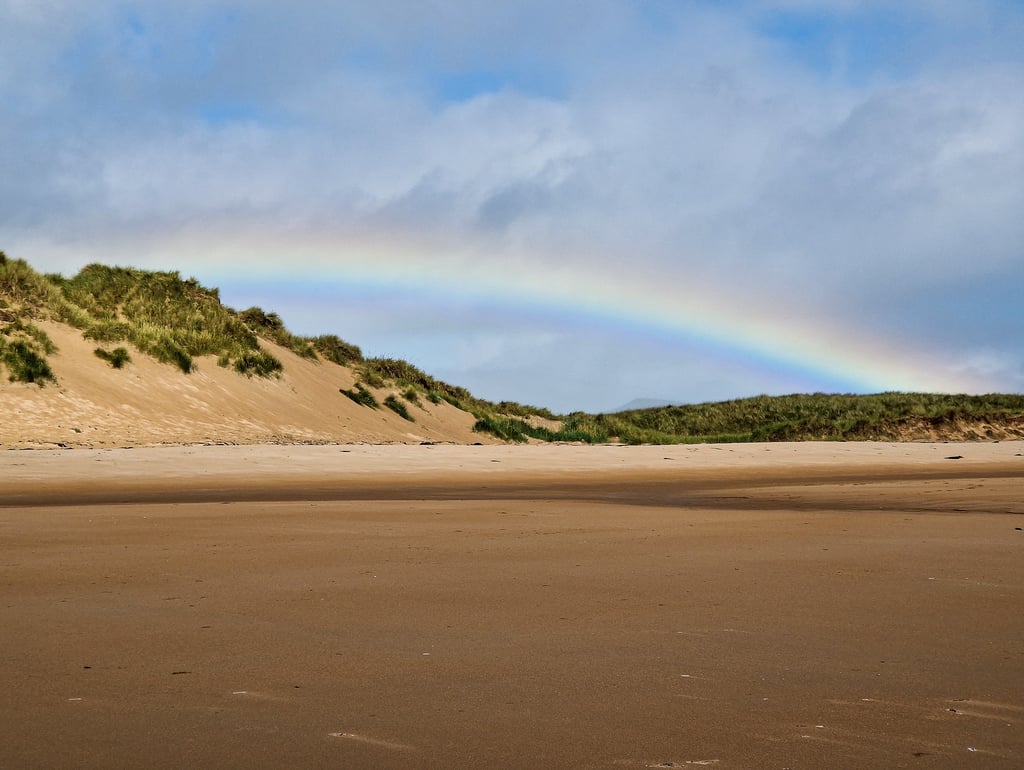

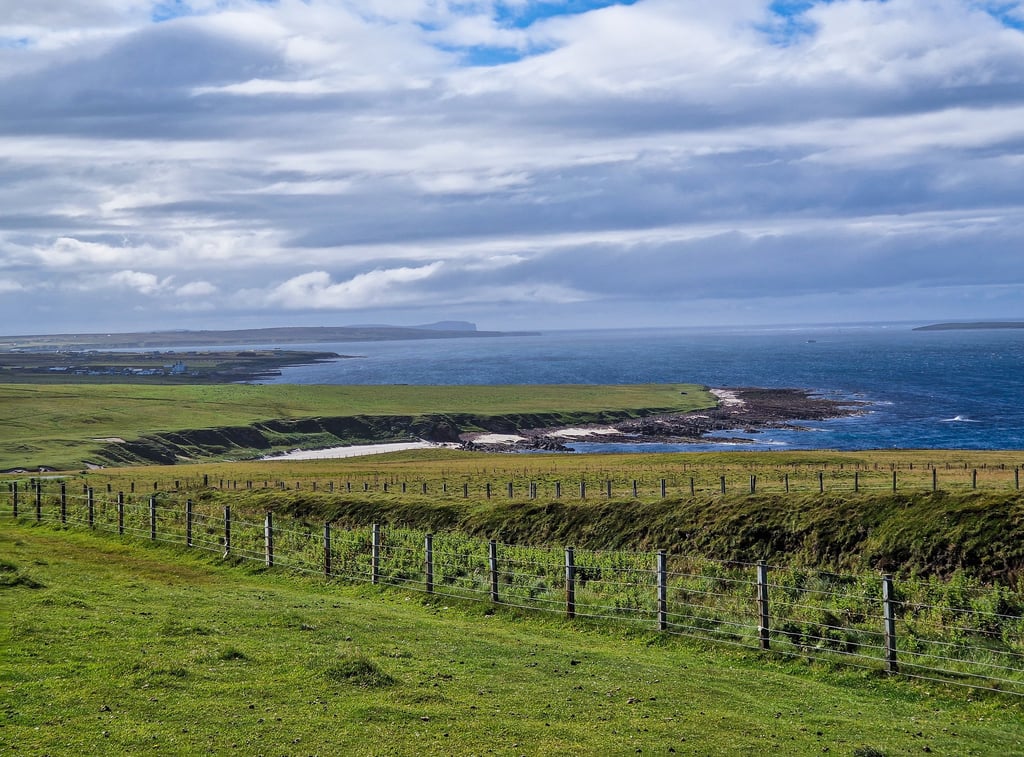

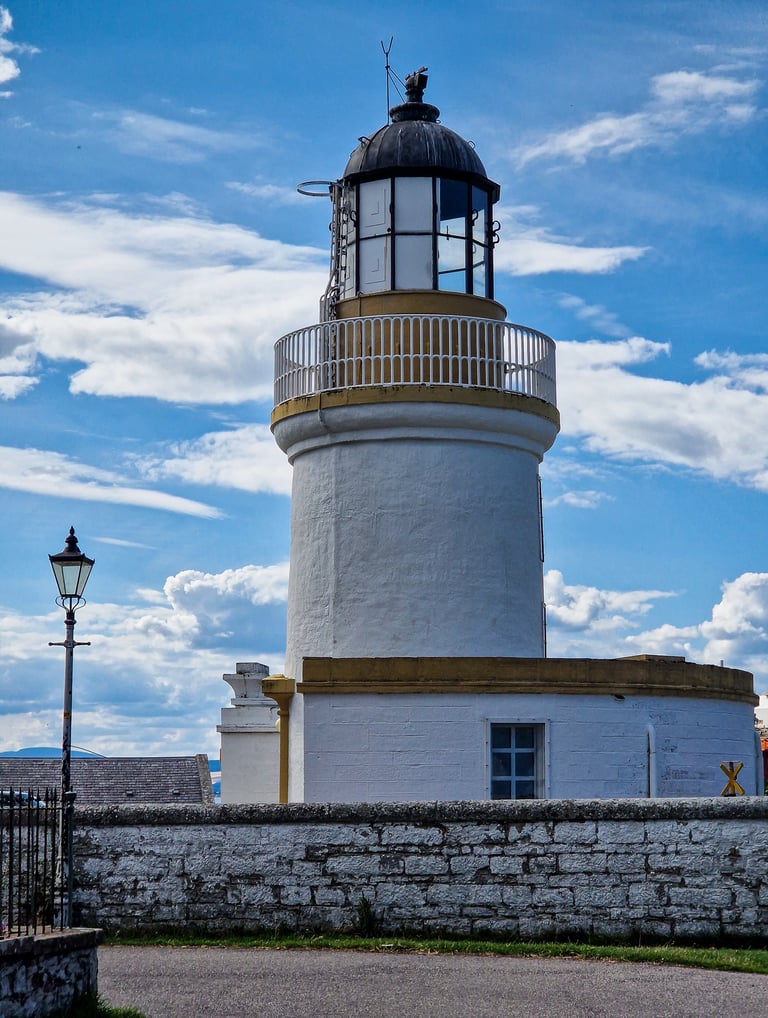



Our advice would be to do this route by campervan. We were practically the only ones travelling by tent, which can be explained by the fact that the weather here can be quite rough because of the big open Atlantic Ocean. We had been blessed by the weather thus far and didn't feel so lucky anymore when we saw the weather forecast, which is why we decided to head back south again.
Scotland has done a great job at marketing the North Coast 500, so for a full list of all the places you can visit along the route and what's there to see, visit their amazing website! For now, we will take you with us along the highlights of the northeast part of the route.
When continuing the part of the route that we haven't covered yet, we can recommend taking a detour through the Flow Country and specifically a visit to Forsinard Flows. This mind-blowingly stunning and vast national park consists of beautiful purple and orange blanket bogs and mountains. Fun fact: it's one of the newest Unesco World Heritage Sites, receiving the status in 2024.
We saw train stations in the middle of this park, at the castle, and along most of the eastern North Coast 500 towns as well, which made us really want to do a train trip through the UK someday as you get to travel along some of the most remarkable places!
Off-the-beaten track: a visit to the Orkney and Shetland islands
An amazing addition to a Scottish road trip is a visit to the Orkney and/or Shetland islands. Orkney is located less than two hours off the coast of Scotland and is therefore a very easy add-on. It's rather interesting how it already has that true 'at the end of the world' island vibe while being rather accessible. It is a true history gem, from the oldest settlement ever found in Europe, to mysterious stone circles and remnants of World War II. Nature lovers will also be fulfilled with a trip to Orkney due to its variety of rugged coastlines and gorgeous, almost Mediterranean-like bays.
Shetland is also rather easily reachable, even though it's located halfway between Scotland and Norway. Once you've made it to Orkney, there is a direct ferry to Shetland that takes about 6 hours during the day or 8 hours overnight. Shetland is quite different from Orkney, it is larger, even more remote and has an even bigger variety of landscapes, with the addition of red volcanic landscapes. In case you would really like to see puffins, Shetland is definitely a must-visit.
In short, if you've already made it to John o'Groats in the far northeast, you might as well visit these very stunning and special islands as well. We cover all the highlights and everything you should know it our separate Orkney travel guide and Shetland travel guide.
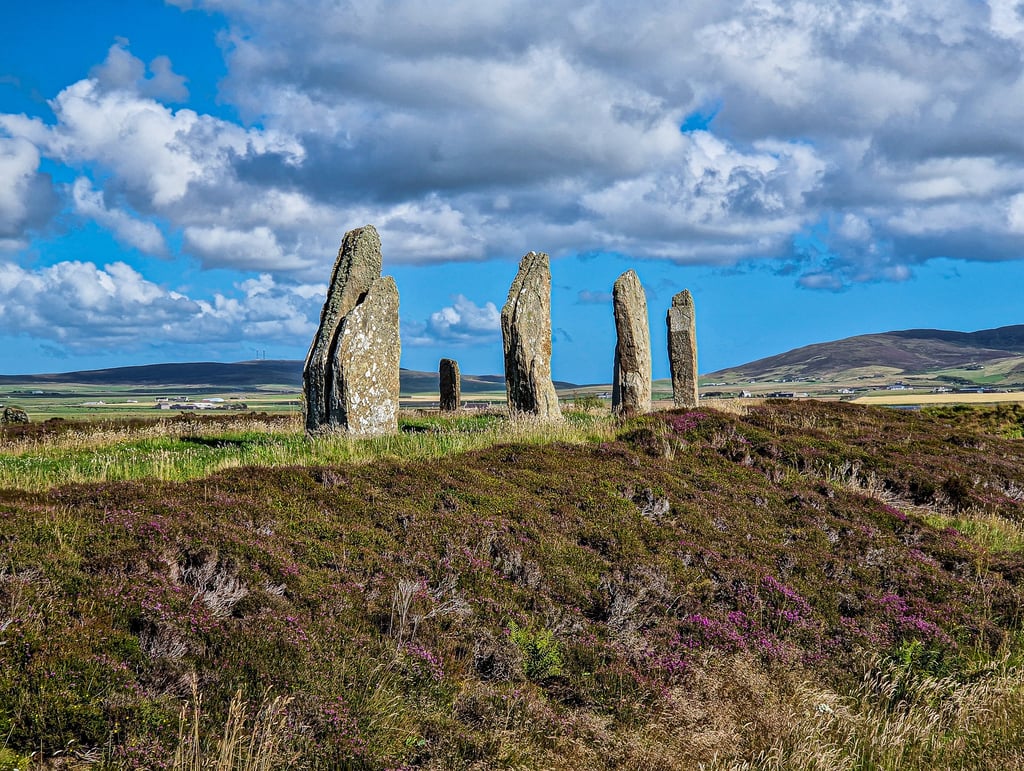



Glasgow
Glasgow is a diamond in the rough. It's traditionally an industrial city, which has resulted in both a grand display of wealth, as well as poverty and the social issues related to it. One street can be really beautiful and the next one can be quite sketchy. Nevertheless, our experience has been mostly positive, especially since the city is generally lively, atmospheric and hip.
The city centre consists of many beautiful grand 19th-century buildings. Here you can find the beautiful central station and many shops and restaurants. We particularly enjoyed cocktail hour and dinner at Revolución de Cuba.
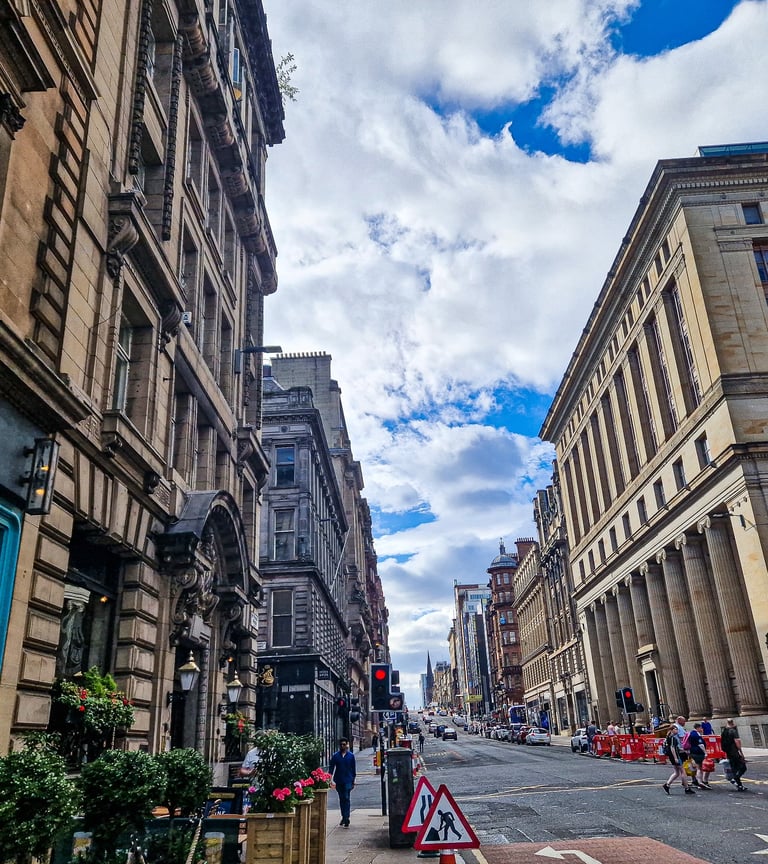

Other famous museums nearby are the different Hunterian museums. Afterwards, we would suggest going to Byres Road, which is the central street of this lively neighbourhood. At the end of the street, you'll find the old Botanical garden and a very cool bar and restaurant in a previous church called Òran Mór.
You'll find plenty of fun bars and restaurants on this side of town, probably because of all the students. We had the best bubble milk tea ever at Xing Fu Tang and a great Japanese meal at the cool Ramen Dayo. The latter is located in the fun hidden alley called Ashton Lane, where there a several more cool bars and restaurants.
However, we would argue that the city centre is not the most fun part of Glasgow. We liked the neighbourhood next to the university the best. We would recommend walking from the centre to the Kelvin Grove Art Gallery and Museum via Argyle Street. This (free!) museum has a very fun mix of different collections of the history of Glasgow, natural history and art. There are also classical music concerts.
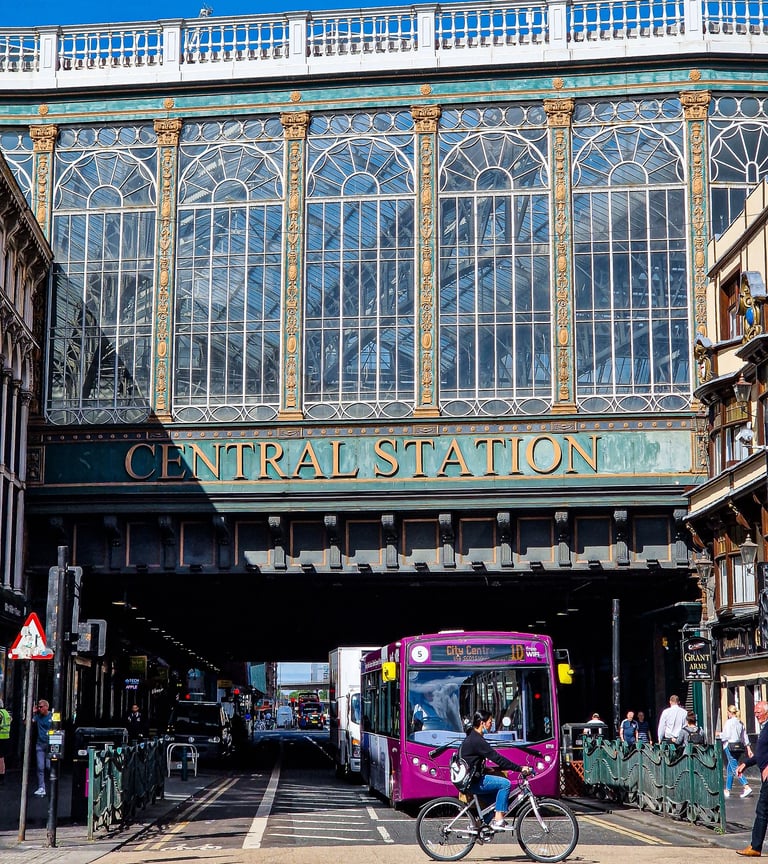

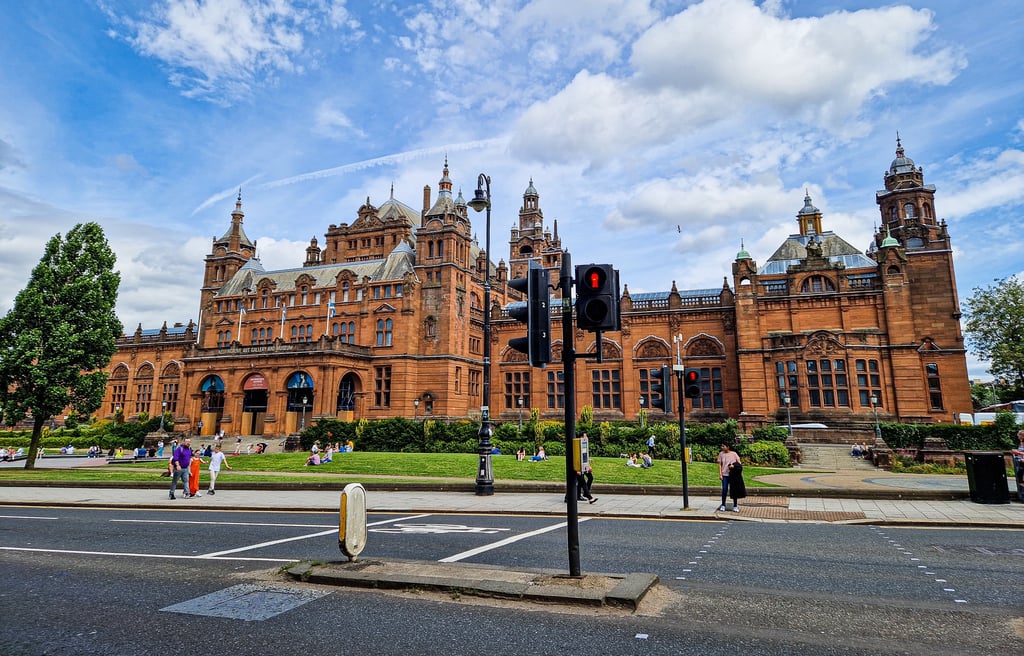


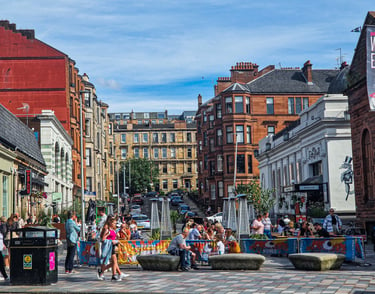
Some general good-to-knows
Scotland is not a cheap destination to visit. You can save a lot of money by travelling with a tent or campervan and making your own meals. Activities can be quite expensive, but if you mostly explore museums, cities, towns and nature, the only thing you'll pay is parking fees.
Wild camping is allowed in Scotland. We advise you to download an app like park4night to find spots as it can be quite difficult, especially with a rooftop tent or camper. You can just set up your tent in nature if you like.
The UK has an amazing train network. You can go almost everywhere! You can save a lot of money on train tickets by getting an interrail pass. Check out our sustainable travel page for more info on that.
Scotland is not too touristy, but it's still advisable to visit it during the 'shoulder season' like June and September if you can.



